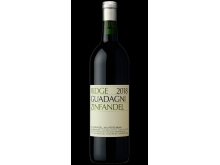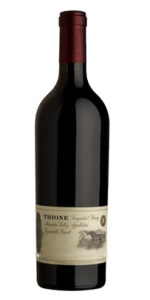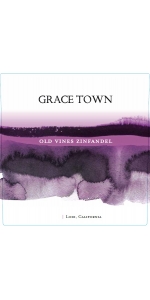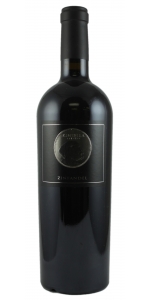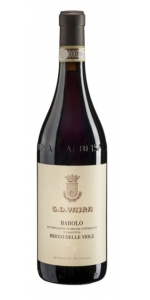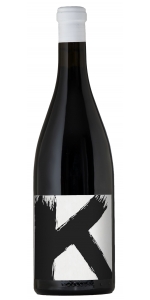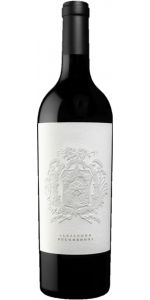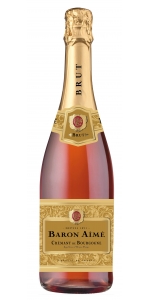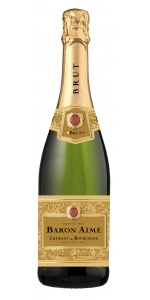Ridge Zinfandel Guadagni 2018
| Country: | United States |
| Regions: | California California (Sonoma County) |
| Winery: | Ridge Vineyards |
| Grape Type: | Zinfandel |
| Organic: | Yes |
| Vintage: | 2018 |
| Bottle Size: | 750 ml |
Trione Zinfandel Flatridge Ranch is made from 100 percent Zinfandel.
Aromas of briarwood and pipe tobacco give way to blackberry pie, toasted macaroons and plums. The wine is velvety, supple and rich with a long, satisfying finish. This Zinfandel, a Sonoma County classic, will continue to age for many years to come.
Flatridge Ranch is a secluded parcel in the Coastal mountain range, west of the Rockpile AVA. Here the Trione family planted a 10 acre vineyard in 2008. The vines are a unique Zinfandel selection called Saint Peter’s Church, whose provenance is a 100-year-old block in Cloverdale, a small town north of our Geyserville winery. The 2013 vintage was a perfect growing season.
Cases produced: 575
Winemaking: We fermented the grapes in small, open top fermenters, hand plunging the cap three-four times daily. The wine aged 18 months in American oak barrels, 40% new.
Grace Town Old Vine Zinfandel Lodi is amde from 98% Old VIne Zinfandel + 2% Cabernet Sauvignon.
Ruby red in color, with red fruit, raspberry, and spice on the nose. This wine is medium in body, with notes of ripe cherry, cedar box, cinnamon, anise, black pepper, and hint of smoke on the palate. It has a long, silky finish.
Kinsella Estates Spencer Zinfandel is made from 100 percent Zinfandel.
A complex amalgamation of tart blueberries, baked plums, warm earth, fresh black cherries, anise, pie crust, brown sugar and a slight note of sweet confectionary candy. On the palate, the wine is plush with great depth and an expansive roundness that seems to push outward with power. The complex flavor mirrors the nose, with a savory/spicy finish and a slightly sticky/resinous grip of the tannins.
G.D. Vajra Bricco Delle Viole Barolo is made from 100 percent Nebbiolo.
The Barolo Bricco delle Viole shows the signature verticality of its vineyard. The wine is beautifully layered and - while restrained as it’s always the case in the youth of Bricco delle Viole - it also shows a complexity of layers with purple flowers, sweet spices and mineral tones. The palate is noble, with a refined acid spine and profound tannins that promise a long aging potential.
Among the historical vineyards of Barolo, Bricco delle Viole is the highest and the closest to the Alps. It rises from 400 to 480 meters above sea level, on the Western ridge of the village. Its name, “Hill of Violets”, originates from the flowers that blossom early here due to the perfect south exposure. Up above the fogs, Bricco delle Viole enjoys the earliest sunrise and the last sunset every day. Thanks to its vines dating back to 1949 and -now- 1931, a dramatic diuturnal temperature range and this pure light, Bricco delle Viole generates a sophisticated and profound Barolo DOCG of bright aromatics, chiseled tannins and subtle minerality. 2018 is a vintage that shows many nuances of Bricco delle Viole: beyond the signature verticality of this site, the wine offers high tones laced with mineral nuances and plenty of energy and youth.
Review:
The 2018 Barolo Bricco delle Viole is not super intense, but it is balanced in its own way. The wine is subdued but complete with softly yielding tannins to support an elegantly streamlined mouthfeel. Bricco delle Viole is a high and cool growing site in Barolo at 400 to 480 meters in elevation with characteristic Sant'Agata marl soils with fossils. The wine represents a selection of fruit from over seven hectares. With fermentation in steel tank and aging in large Slavonian oak, you are invited to a silky, lifted and beautifully delicate experience with an accessible personality.
-Wine Advocate 95 Points
Cellar Selection
An elegant version, this red features rose, black currant, cherry, mineral and a hint of eucalyptus aromas and flavors. Linear in profile, this is solidly built on a graceful frame, with finely woven tannins and vibrant acidity.
- Wine Spectator 95 Points
K Vitners The Hidden Syrah is made from 100 percent Syrah.
It is not a secret the magnitude this wine can reach. In this vintage, femininity reigns supreme. Perfume, flowers, cassis. All anchored to sense of place with stone, ancient soil and chanterelles that make this wine a wine of the earth.
Review:
Kirsch, ripe black cherries, roasted herbs, violets, and orange blossom notes all emerge from the 2018 The Hidden Syrah Northridge Vineyard, which is all Syrah brought up in neutral oak. Rich, full-bodied, and beautifully polished, it packs loads of fruit yet stays light on its feet, with no sensation of heaviness. As with all of these Syrahs from Smith, it's going to benefit from 2-4 years of bottle age.
-Jeb Dunnuck 96 Points
It is hard to imagine with the Lithology range receiving 298 points out of 300 for the three single-vineyard wines, that there could possibly be a wine above them. But there is, and it is our Estate wine. Blended several times very intently by masters of their craft Philippe Melka and Michel Rolland, this is the ultimate expression of our house’s work. Positive, full-bodied, and quite powerful, there’s the expected crème de cassis and blackberry from St. Helena Cabernets, with mineral, herb, subtle tobacco and vanilla, plum skins, and pie crust, purple flowers, forest-conifer notes, and very fine tannic structure. It is a magnificent, and magnificently elegant expression of this house, and when asked recently, Monsieur Rolland stated plainly to me, “oh yes indeed – this is the best one, the best yet…”
Review:
The flagship 2018 Cabernet Sauvignon Alejandro Bulgheroni comes from a selection made by winemakers Philippe Melka and Michel Rolland, mostly from Rutherford and Oakville fruit. Aged 20 months in 78% new French oak, it has incredible aromatics of black and blue fruits, spring flowers, and graphite to go with a massive, full-bodied, concentrated style on the palate that somehow stays graceful, weightless, and elegant. This tour de force in Napa Valley Cabernet Sauvignon is guaranteed to put a smile on your face over the coming 20-25+ years.
-Jeb Dunnuck 99 Points
Ridge Zinfandel Guadagni is made from 80% Zinfandel, 20% Petite Sirah.
Jammy nose of blackberry and cassis with notes of pepper, mint and tobacco. Full-bodied on the palate with well coated tannins, black cherry fruit and a long, layered finish.
Owned and farmed by the Guadagni family for over fifty years, this vineyard grows in the rocky soils at the northern edge of the Dry Creek Valley. Planted primarily to zinfandel; petite sirah from an adjacent parcel was added this year for color and depth. We limited pump-overs to once daily and pressed after eight days of fermentation as color and tannin were plentiful.
In 1962, Ridge made its first Monte Bello, and two years later its first zinfandel. Since that time, Ridge has championed single-vineyard winemaking, searching California for those rare and exceptional vineyards where climate, soil, and variety are ideally matched.
Ridge Vineyards: Property in the 1800’s
The history of Ridge Vineyards begins in 1885, when Osea Perrone, a doctor who became a prominent member of San Francisco’s Italian community, bought 180 acres near the top of Monte Bello Ridge. He terraced the slopes and planted vineyards; using native limestone, he constructed the Monte Bello Winery, producing the first vintage under that name in 1892. This unique cellar, built into the mountainside on three levels, is Ridge’s production facility. At 2600′, it is surrounded by the “upper vineyard”, now referred to as the Perrone Ranch.
The 1940’s: Restart of the Winery
In the 1940s, William Short, a theologian, bought the abandoned winery and vineyard just below the Perrone property; he replanted several parcels to cabernet sauvignon in the late 1940s. From these vines — now the “middle vineyard” and referred to as the Torre Ranch — new owners Dave Bennion, Hew Crane, Charlie Rosen, and Howard Ziedler, all Stanford Research Institute engineers, made a quarter-barrel of “estate” cabernet. That Monte Bello Cabernet was among California’s finest wines of the era. Its quality and distinctive character, and the wines produced from these same vines in 1960 and ’61, convinced the partners to re-bond the winery in time for the 1962 vintage. Dave Bennion left his role at S.R.I. to oversee winemaking duties full time.
The Zinfandel Introduction
The first zinfandel was made in 1964, from a small nineteenth-century vineyard farther down the ridge. This was followed in 1966 by the first Geyserville zinfandel. The founding families reclaimed the Monte Bello terraces, increasing vineyard size from fifteen to forty-five acres. Working on weekends, they made wines of regional character and unprecedented intensity.
A New Era of Winemaking
By 1968, production had increased to just under three thousand cases per year, and in 1969, Paul Draper joined the partnership. A Stanford graduate in philosophy—recently returned from setting up a winery in Chile’s coast range—he was a practical winemaker, not an enologist. His knowledge of fine wines and traditional methods complemented the straightforward “hands off” approach pioneered at Ridge. Under his guidance the old Perrone winery (acquired the previous year) was restored, the finest vineyard lands leased or purchased, the consistent quality and international reputation of the wines established. Cabernet and Zinfandel account for most of the production; Syrah, Grenache, Carignane, and Petite Sirah constitute a small percentage. Known primarily for its red wines, Ridge has also made limited amounts of chardonnay since 1962.
Recent History and Expansion of Operations
Lytton Springs, in Sonoma County, became part of the Ridge estate in 1991. A quarter century’s experience with this vineyard had convinced us that it was an exceptional piece of ground. Forty consecutive vintages of Geyserville attest to yet another stunning combination of location and varietals. Though born in the early sixties to the post-Prohibition world of modern California winemaking, Ridge relies on nature and tradition rather than technology. Our pre-industrial approach is straightforward: find intense, flavorful grapes; intrude upon the process only when necessary; draw the fruit’s distinctive character and richness into the wine.
Baron Aime Cremant de Bourgogne Brut Rose NV is made from 85% Pinot Noir & 15% Chardonnay.
Light pink color with coppery shades. The citrus notes blend subtly with aromas of strawberry, forming a fresh and delicate bouquet. The palate is lively, with notes of grapefruit and fresh bread. Together they form a rich, fresh and vibrant wine.
Review:
"Steely amber color. Aromas and flavors of strawberry, green apple, toasted oats, and creme fraiche with a satiny, lively, finely carbonated, dry light-to-medium body and a tingling, intricate, medium-length finish that presents overtones of slightly under ripe wild strawberries, apricot, warm bread dough, and lemon zest. Lively and bright for a perfect apéritif yet with just enough richness and body to carry you in seamlessly to the first course."
- Beverage Testing Institute (November 2022), 94 pts - GOLD MEDAL - BEST BUY
Baron Aime Cremant de Bourgogne Brut is made from 40% Chardonnay, 30% Pinot Noir, 30% Aligote.
Light yellow with bright reflections. The nose is fresh and lemony with subtle floral aromas, apple and citrus fruits. The mouth is fresh, delicate, tight and precise with fine bubbles that stimulate the palate nicely.
A delicious aperitif and a great match with shellfish.
Review:
Golden straw color. Aromas and flavors of brioche, green and yellow apple, dried pineapple, and lemon oil with a supple, vibrant, finely carbonated, dry medium body and a smooth, engaging, medium-long finish displaying impressions of croissant with salted butter and tart pear jam, white tea, and grapefruit peel with no oak flavor. A lovely and racy apéritif that will pair splendidly with a cheese and bread course."
- Beverage Testing Institute 93 pts - GOLD MEDAL - BEST BUY
- back
Paul Hobbs Coombsville Cabernet Sauvignon is made fro 85% Cabernet Sauvignon, 7% Cabernet Franc, 6% Petit Verdot, 2% Merlot.
Since our inaugural release last year, this wine has quickly become one of the most compelling in their portfolio. Offering a gorgeous deep purple hue, our 2019 captivates with a bouquet of crushed blueberry, summer savory spice, and a delicate tobacco leaf note. The palate is remarkably balanced with well-integrated
tannins and fresh acidity that wraps around boysenberry and black fig along subtle notes of rosemary and a crush rock minerality, which lends tension through the long finish.
Review:
A delicious, layered, chocolate- and cherry-scented wine that entices you from the first sniff and pulls you through a rich palate and a lingering finish. So luscious, balanced, vivid and deep, showing the silky tannins and cool fruit notes of this southern Napa district. Contains 6% petit verdot, 2% cabernet franc and 4% merlot. Aged in 53% new French oak.
-James Suckling 96 Points
A delicious, layered, chocolate- and cherry-scented wine that entices you from the first sniff and pulls you through a rich palate and a lingering finish. So luscious, balanced, vivid and deep, showing the silky tannins and cool fruit notes of this southern Napa district. Contains 6% petit verdot, 2% cabernet franc and 4% merlot. Aged in 53% new French oak. Drinkable now, but best from 2030.
-PinotReport 96 Points
A brooding and intense wine. The aromas begin with notes of blueberry, cassis, a hint of lavender followed by a myriad of exotic spices, some hazelnut, thyme and an element of licorice. Firm, mature tannins—evidence of Ten's ageability—are followed by a long, velvety finish.

